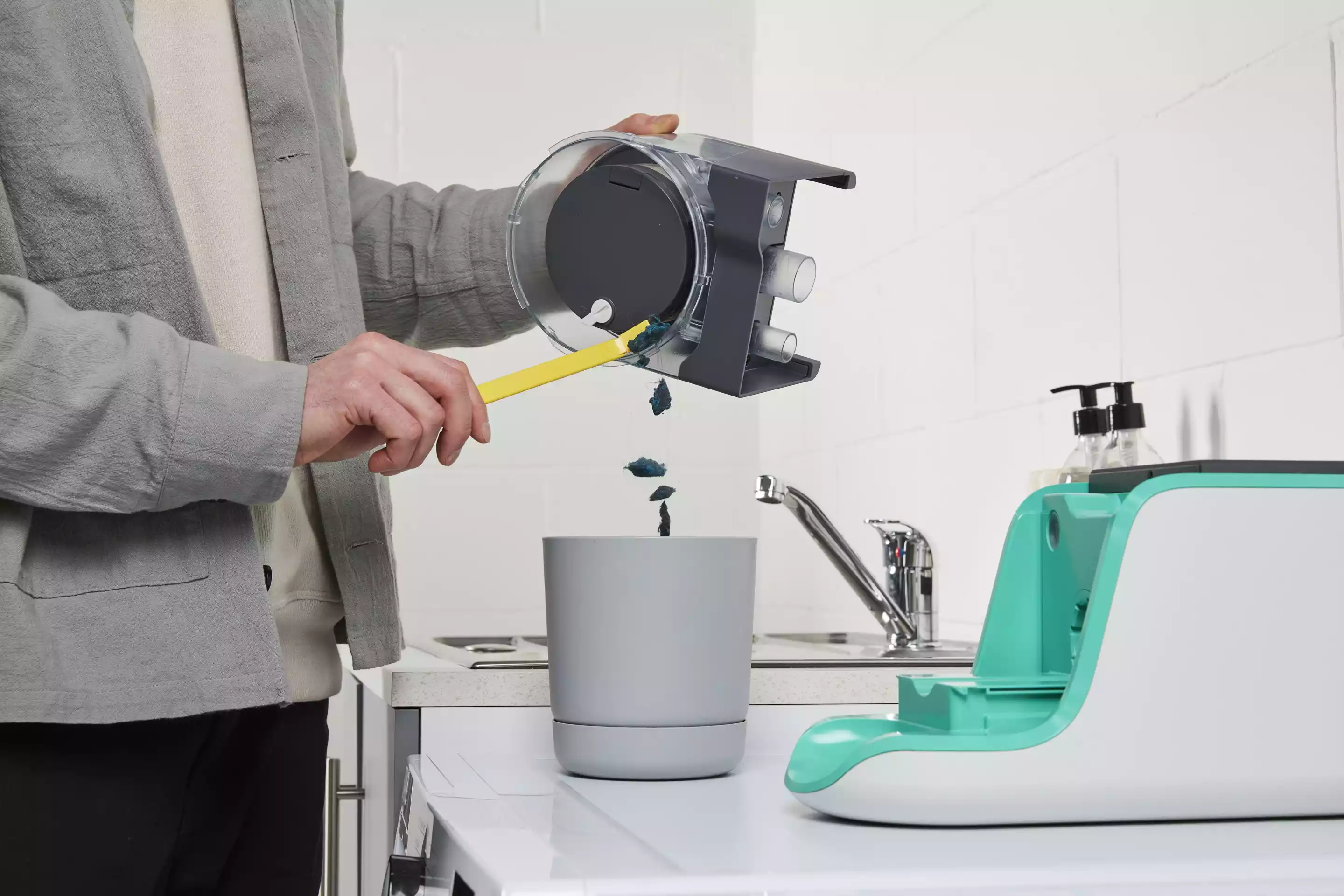A significant percentage of waterborne microplastic pollution takes the form of synthetic microfibers, which are shed by our clothes as they're being washed. A new device known as Gulp lets homeowners filter those fibers out of their wash water, keeping them from reaching rivers or the sea.
Currently the subject of a Kickstarter campaign, Gulp was invented by British engineer Adam Root. He previously designed products for Dyson, and founded his own company, Matter, to develop and manufacture the device.
Gulp is reportedly compatible with any make and model of washing machine. That machine's drain hose connects to the back of the device, delivering used wash water into it. The water passes through a removable, reusable filter cup in the Gulp, then proceeds out of the device's own drain hose and into the municipal sewage system.

According to Matter, the setup is capable of removing up to 90% of microfibers from each load of laundry. After approximately 20 wash cycles, an LED on top of the device indicates that its filter cup is full. The user then just pulls that cup out, empties it, and puts it back in.
It should be noted that other microfiber filtration systems do exist, but most of them utilize disposable filters that have to be replaced, and that are simply discarded at the end of their use.
Speaking of which, what happens to the fibers that Gulp collects? Matter says that users can save them up then send them to the company, which will recycle them or utilize them in research. Even if the captured fibers are just put in the garbage and dumped in a landfill, Matter states that's still much better than letting them pass into local waterways.

Should you be interested, Gulp is currently the subject of a Kickstarter campaign. Assuming it reaches production, a pledge of £149 (about US$169) will get you one – the planned retail price is £250 ($283).
It's demonstrated in the following video.
Sources: Kickstarter, Gulp






